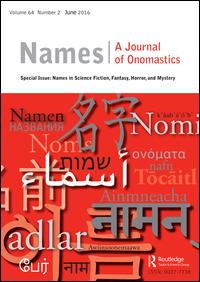Published 2002-09-01
Copyright (c) 2002 Maney

This work is licensed under a Creative Commons Attribution 4.0 International License.
Abstract
AbstractNicknames generally show closer relationships to their users' subculture than do more fixed parts of language. This study looks at nicknames and nickname use among the Tumbuka of southern Africa-how they are formed and how they function in Tumbuka society. More males ,than females have nicknames and male nicknames suggest power and dominance while female nicknames suggest conciliation and cooperation.
References
- Alford, Richard D. 1988. Naming and Identity: A Cross-cultural Study of Personal Naming Practices. New Haven, CT: Human Relations Area Files.
- Busse, Thomas V. 1983. “Nickname Usage in an American High School.” Names 31: 300–306.
- de Klerk, Vivian, and Barbara Bosch. 1996. “Nicknames and Sex Role Stereotypes.” Sex Roles 35: 525–541.
- Leslie, Paul L., and James K. Skipper. 1990. “Toward a theory of Nicknames: A Case of Socio-Onomastics.” Names 38: 273–281.
- Milroy, L. 1980. Language and Social Networks. Oxford: Blackwell.
- Muthwii, M. J. 2000. “Interlingual Variables in Measuring and Interpreting the Degree of Ethnicity in Speech.” South African Journal of African Languages 20: 353–369.
- Neethling, S. J. 1994. “Xhosa Nicknames.” South African Journal of African Languages 14: 88–92.
- Van Langandonck, Willy. “On the Theory of Proper Names.” XIV International Congress of Onomastic Sciences. Cracow.

